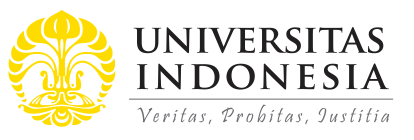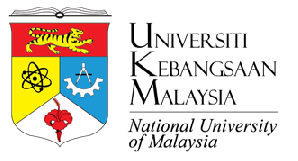
Abstract
This paper explores the idea of context as the basis for developing creative workshops for children in disaster-stricken communities. We argue that creative learning should not be seen merely in terms of artistic expression and abstract thinking. Instead, it should become a platform for celebrating local contexts and cultures through the learning process. This study was based on reflecting on two creative workshop activities that were held in post-disaster schools in Cianjur, West Java. The school is part of the Sekolah Indonesia Cepat Tanggap (SICT) program—a fast-track school construction initiative for communities affected by disasters throughout Indonesia. The creative workshops were conducted to engage and familiarize students with their new school environments and build their sense of ownership of their new schools based on the idea that creative workshops for communities can be informed by the richness of local food, agriculture, local events, and experiences in context. This contextual information was embedded in the workshops, enabling the children to produce creative works that highlighted individual and collective layers of locality. The relationship between the creative media used in the workshops and the context allowed the students to produce works that freely expressed their identities, reflecting their belongingness and roles within society. The students’ work was later exhibited in the schools, enabling them to interactively engage with the school spaces. This article outlines context-based learning strategies that can be used in creative workshops to enable communities to situate and express aspects of their everyday localities.
References
Abudayyeh, R. (2021). Grafting interiority: Generative methodologies between the natural and the synthetic. Interiority, 4(2), 249–266. https://doi.org/10.7454/in.v4i2.160
Alexander, C. (1973). Notes on the synthesis of form. Harvard University Press.
Allen, K.-A. (2019, August 9). 5 ways to boost students’ sense of school belonging. https://www.monash.edu/education/teachspace/articles/5-ways-to-boost-students-sense-of-school-belonging
Ardianta, D. A., Yatmo, Y. A., & Atmodiwirjo, P. (2023). (Re)drawing the community-based environment. IOP Conference Series: Earth and Environmental Science, 1268(1), Article 012043. https://doi.org/10.1088/1755-1315/1268/1/012043
Baldeón, C. P. H., Fuster-Guillén, D., & Geronimo, R. K. M. (2022). Perspective of visual perception in learning to read and write in children from 6 to 8 years old. International Journal of Health Sciences, 6(S7), 568–592. https://doi.org/10.53730/ijhs.v6nS7.11208
Beauregard, R. (2022). The stories that documents tell. Fennia - International Journal of Geography, 199(2), 281–284. https://doi.org/10.11143/fennia.115188
Bowker, R., & Jasper, A. (2007). ‘Don’t forget your leech socks’! Children’s learning during an Eden Education Officer’s workshop. Research in Science & Technological Education, 25(1), 135–150. https://doi.org/10.1080/02635140601053732
Brolles, L., Derivois, D., Joseph, N. E., Karray, A., Pasut, N. G., Cénat, J. M., Pamphile, J., Lafontant, E. M., Alexandre, M. R., Felix, G., & Chouvier, B. (2016). Art workshop with Haitian street children in a post-earthquake context: Resilience, relationship and socialisation. International Journal of Art Therapy, 22(1), 2–7. https://doi.org/10.1080/17454832.2016.1245768
Chappell, K., & Craft, A. (2011). Creative learning conversations: Producing living dialogic spaces. Educational Research, 53(3), 363–385. https://doi.org/10.1080/00131881.2011.598663
Craft, A., Cremin, T., Hay, P., & Clack, J. (2013). Creative primary schools: Developing and maintaining pedagogy for creativity. Ethnography and Education, 9(1), 16–34. https://doi.org/10.1080/17457823.2013.828474
Davies, M. (2003). Movement and dance in early childhood (2nd ed). Paul Chapman.
Ehrlén, K. (2009). Drawings as representations of children’s conceptions. International Journal of Science Education, 31(1), 41–57. https://doi.org/10.1080/09500690701630455
Felder, M. (2021). Familiarity as a practical sense of place. Sociological Theory, 39(3), 180–199. https://doi.org/10.1177/07352751211037724
Gal, A., & Gan, D. (2021). Imagine a school: Children draw and explain the ideal environmental school. Australian Journal of Environmental Education, 37(3), 208–223. https://doi.org/10.1017/aee.2021.3
Harani, A. R. (2023). Learning from nature: Exploring systems of plants and animals for form generation. ARSNET, 3(1), 32–45. https://doi.org/10.7454/arsnet.v3i1.73
Hay, P. (2024). Creative pedagogies: School without walls and forest of imagination. TheInternational Journal of Art & Design Education. https://doi.org/10.1111/jade.12512
Hwang, S. Y. (2016). Rethinking creativity: Present in expression in creative learning communities. Educational Philosophy and Theory, 49(3), 220–230. https://doi.org/10.1080/00131857.2016.1225559
Jankowska, M., & Atlay, M. (2008). Use of creative space in enhancing students’ engagement. Innovations in Education and Teaching International, 45(3), 271–279. https://doi.org/10.1080/14703290802176162
Jeffrey, B. (2008). Creative learning identities. Education 3-13, 36(3), 253–263. https://doi.org/10.1080/03004270802217694
Johnson, B. R., & Hill, K. (Eds.). (2002). Ecology and design: Frameworks for learning. Island Press.
Karimah, A., & Atmodiwirjo, P. (2021). Catalogue drawing: A framing device for design thinking. ARSNET, 1(1), 74–87. https://doi.org/10.7454/arsnet.v1i1.6
Kuntz, A. M., Presnall, M. M., Priola, M., Tilford, A., & Ward, R. (2013). Creative pedagogies and collaboration: An action research project. Educational Action Research, 21(1), 42–58. https://doi.org/10.1080/09650792.2013.761925
Leatherbarrow, D. (2009). Architecture oriented otherwise. Princeton Architectural Press.
National Disaster Management Agency. (2022, November 22). Updates on Cianjur earthquake. Ministry of Foreign Affairs of the Republic of Indonesia. https://kemlu.go.id/portal/en/page/109/Updates_on_Cianjur_Earthquake
Paramita, K. D., & Yatmo, Y. A. (2020). Context learning transformation in architectural design studio. MODUL, 20(2), 157–166. https://doi.org/10.14710/mdl.20.2.2020.157-166
Saginatari, D. P., & Atmodiwirjo, P. (2018). Reflection on ecological learning through architectural design studio. DIMENSI (Journal of Architecture and Built Environment), 45(1), 73–84. https://doi.org/10.9744/dimensi.45.1.73-84
Sosa, M., Ahmad, L., & Musfy, K. (2022). Adaptive ephemeral interiority: Upcycling site specific interiors. Interiority, 5(2), 155–178. https://doi.org/10.7454/in.v5i2.186
Tuan, Y.-F. (2011). Space and place: The perspective of experience (7th ed.). University of Minnesota Press.
Ucus, S., & Acar, I. H. (2017). Exploring the perceptions of student teachers about ‘creative school’ in early childhood education. Early Child Development and Care, 189(2), 191–206. https://doi.org/10.1080/03004430.2017.1307838
Wahid, A. R., & Atmodiwirjo, P. (2021). Re-narrated stories: A reflection on narrative learning in a first year design studio. ARTEKS: Jurnal Teknik Arsitektur, 6(2), 285–294. https://doi.org/10.30822/arteks.v6i2.748
Warakanyaka, A. A. A. S., & Yatmo, Y. A. (2018). Tracing the progression of inhabitation through interior surface in Semarang Old Town. Interiority, 1(1), 64–78. https://doi.org/10.7454/in.v1i1.9
Ward, B. M., & Lerch, H. A. (1975). Early childhood education workshop in perceptual-motor learning. Journal of Physical Education and Recreation, 46(2), 66–68. https://doi.org/10.1080/00971170.1975.10618768
Watson, R. (2014). Learning from the environment and making: Using analysis and the senses. Journal for Education in the Built Environment, 9(1), 69–88. https://doi.org/10.11120/jebe.2014.00001
Recommended Citation
Purnasasmita, Ruth Kartika; Paramita, Kristanti Dewi; and Atmodiwirjo, Paramita
(2024).
Context-Driven Creative Workshop: Celebrating Locality in Disaster-Affected Communities.
ASEAN Journal of Community Engagement, 8(1), 93-106.
Available at: https://doi.org/10.7454/ajce.v8i1.1304







